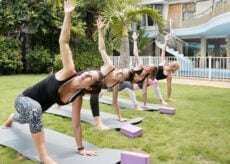Weightlifting After 50: Benefits and How to Get Started
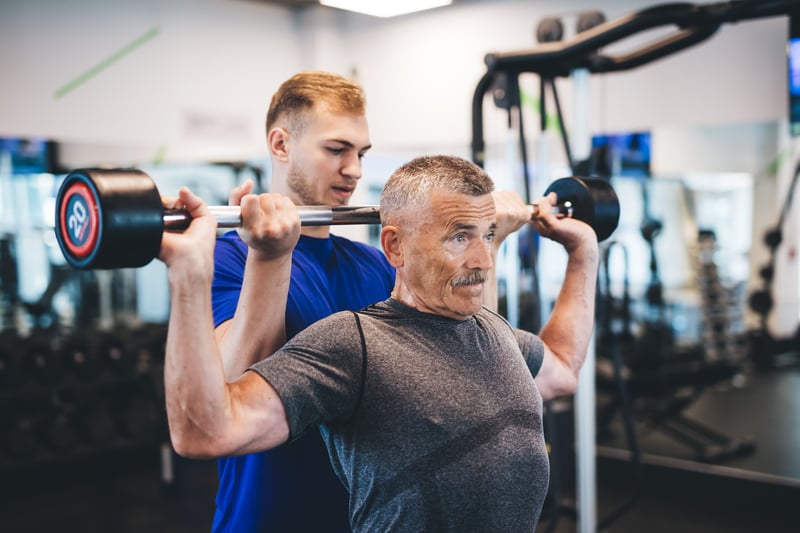
You know you need to exercise, and you’ve been good about getting in your recommended 30 minutes of cardiovascular training, 5 times a week, but did you know that weightlifting after 50 is important, too? It’s a fact. Weightlifting is one of the most important activities you can do to keep your body fit, strong, and functioning at the highest level as you age.
What is Weight Training?
Training with weights is different than doing cardiovascular training. Whereas cardio exercises involve consuming oxygen (“aerobic” exercise) to raise your heart rate and condition your cardiovascular system, weight training is what’s called “anerobic” in that it does not directly use oxygen. Weight training uses the glycogen (stored carbohydrates) in your bloodstream for energy. The repeated contraction of your muscles also tear down and rebuild muscle tissue.
Weight training is also called “resistance training” because in order to train, you move weighted objects like dumbbells, barbells, kettlebells, and sometimes your own body weight against gravity or exert force against the weight or an immovable object.
What are the Benefits of Weightlifting After 50?
Weightlifting does a body good, whether you’re in your teens, 30s, 50s, or beyond. It’s something everyone should do on the regular for so many reasons. According to the National Institute on Aging, weight training leads to big benefits, including:
Getting stronger—being stronger means you can continue to live a normal, self-sufficient life, maintain your posture and balance with ease, stabilize your body, and even increase your life and health span.
Building muscle—muscle naturally atrophies over time as we get older, so to combat that, it’s important to keep up with a consistent weight-training schedule.
Tone up—looking and feeling toned and fit can go a very long way when it comes to maintaining a healthy and happy self-image.
Speed up your metabolism—the more muscle you have, the stronger your metabolism will be. Muscle is a tissue that requires calories to survive (unlike body fat, which does not). So, the more muscle you have on your frame, the more calories you will need to eat just to maintain your weight.
Lose weight—and, if you put on additional muscle mass but continue to eat the same number of calories you always ate, you’ll see yourself start to naturally lose body fat over time as your caloric needs rise while your caloric intake stays the same.
Stay independent—the more you can lift, the more independent lifestyle you can maintain over the years. When you can lift your own grocery bags, move that chair across the room, walk up and down stairs with a basket of laundry, your quality of life can stay intact, and you won’t feel like you’re burdening others with minute tasks.
Maintain joint health—did you know that working your muscles can help alleviate joint pain? Because weight-training strengthens muscles, tendons, and ligaments, when done correctly, this type of exercise can help surrounding tissues better support tired or painful joints.
Better sleep—yes, you can even get more restful sleep when you engage in weight training. You burn calories, work off stress, wear yourself out physically, and release endorphins (the happy hormones).
Stronger bones—the stress placed on the bones during lifting, and the additional weight of the muscle you add to your frame, causes your bones to thicken and become stronger over time. This is important, especially as you get older, since you lose both muscle mass and bone density as you age.
How to Get Started with Weightlifting After 50
If you’re new to lifting, you’ll want to take it slowly. This is truly a case of the tortoise and the hare, where the slow but steady one wins the race. Start with learning some of the basics and doing one exercise for each body part. Start with 12 – 15 repetitions of each. Aim for one set of each exercise, and do this workout for three non-consecutive days this week.
If you’re not sure how to navigate a gym floor, strongly consider hiring a personal trainer to show you the ropes and you started in the right direction.
You may also want to stick to a circuit of machines to start. These will naturally help guide your movements, so you learn the exercises properly before venturing out into using free weights.
Here’s an example:
Month 1 — Full Body
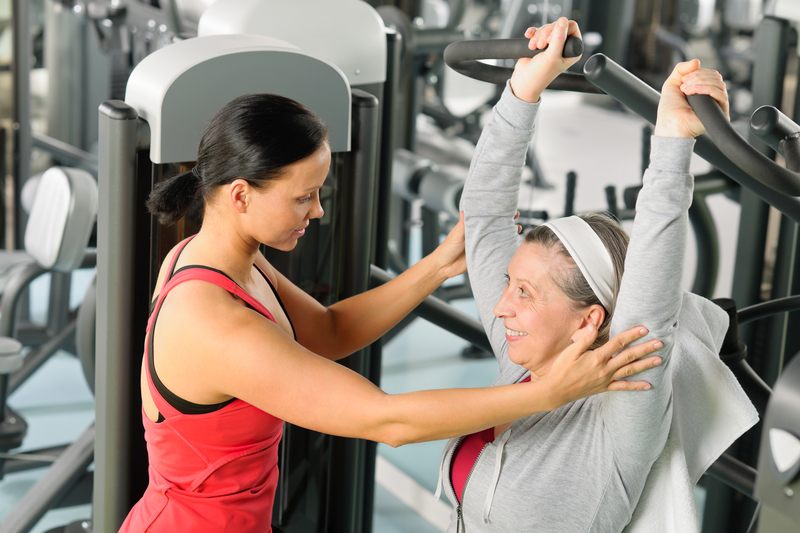
- Chest Press Machine
- Pulldown Machine
- Shoulder Press Machine
- Biceps Curls
- Triceps Kickbacks
- Bodyweight Squats
- Seated Calf Raises
- Crunches
Month 2 — Upper Body/Lower Body Split
In month 2, you can split the body into upper and lower body parts, hitting each area twice during the week. Choose an exercise for each body part and aim for 1 – 2 sets of each exercise and 12 – 15 repetitions.
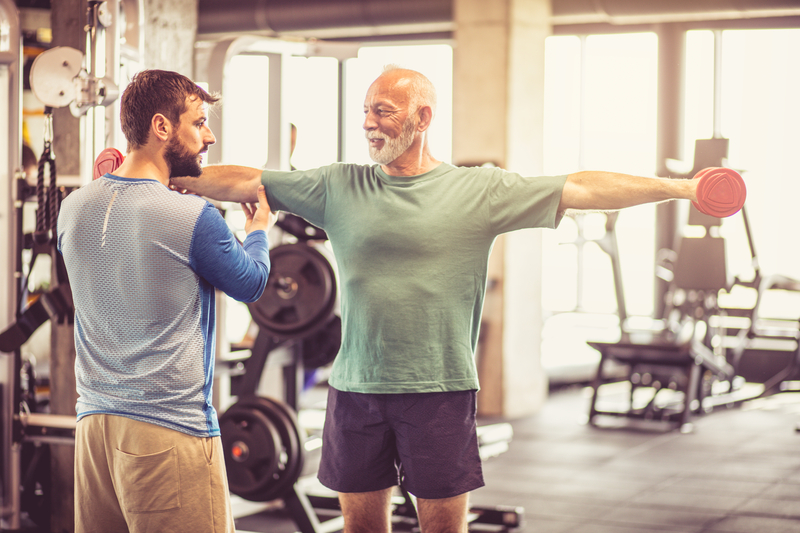
UPPER BODY:
- Chest
- Shoulders
- Triceps
- Back
- Biceps
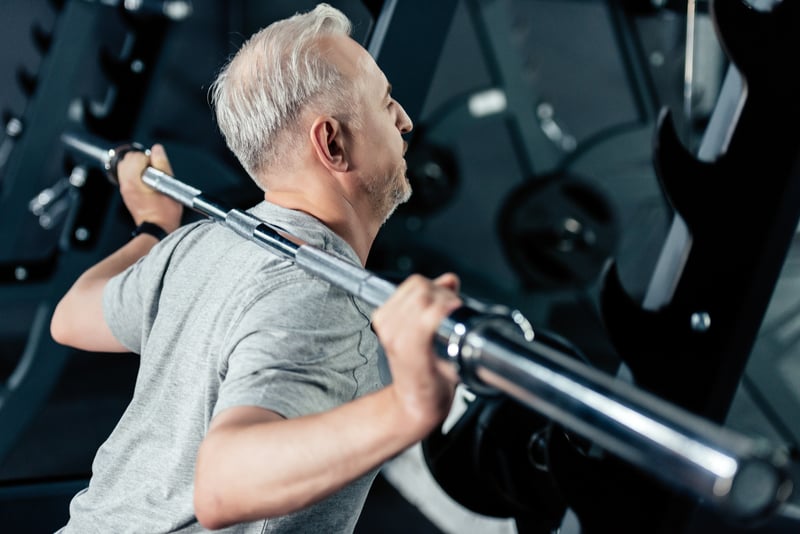
LOWER BODY
- Legs – Leg Extensions (for the front of your legs)
- Legs – Leg Curls (for the back of your legs)
- Glute Bridges
- Calf Raises with a dumbbell in each hand
- Planks
Month 3 — Body Part Split
You are now ready to hit each body part with more intensity: more repetitions and exercises. Try to do two to three exercises for each body part and go for 8 – 12 repetitions for 3 sets on each exercise.
- Chest
- Shoulders
- Triceps
- Back
- Biceps
- Legs
- Abs
Such a workout might look something like this:

CHEST
- Pushups
- Chest Presses
- Dumbbell Flyes
SHOULDERS
- Seated Overhead Presses
- Dumbbell Lateral (Side) Raises
- Front Raises
RELATED: Collagen Doesn’t Work (Unless…)
TRICEPS
- Cable Pushdowns
- Dumbbell Kickbacks
- Bench Dips
BACK
- Pulldowns
- Seated Pulley Rows
- Close-Grip Rows
- Good Mornings
BICEPS
- Biceps Curls
- Hammer Curls
LEGS
- Squats
- Hamstring Curls
- Lunges
- Standing Calf Raises
- Glute/Hip Thrusts
ABS
- Planks
- Crunches
- Side Planks
Just remember to:
- Start slowly
- Build your weight up gradually over time
- Seek guidance if you’re not sure what you’re doing
- Always practice perfect form
- Make sure the last few reps of every set are very difficult to lift; otherwise, you just won’t make progress.
Finally, going to “failure” is success. Congratulations for giving yourself and your body the gift of weightlifting!




 7 Signs Your Body is Seriously Low on Collagen (not just wrinkles)
7 Signs Your Body is Seriously Low on Collagen (not just wrinkles) Health Expert: "Turmeric Doesn't Work (unless...)"
Health Expert: "Turmeric Doesn't Work (unless...)" 3 Warning Signs Your Probiotic Supplement is a Total Waste
3 Warning Signs Your Probiotic Supplement is a Total Waste

